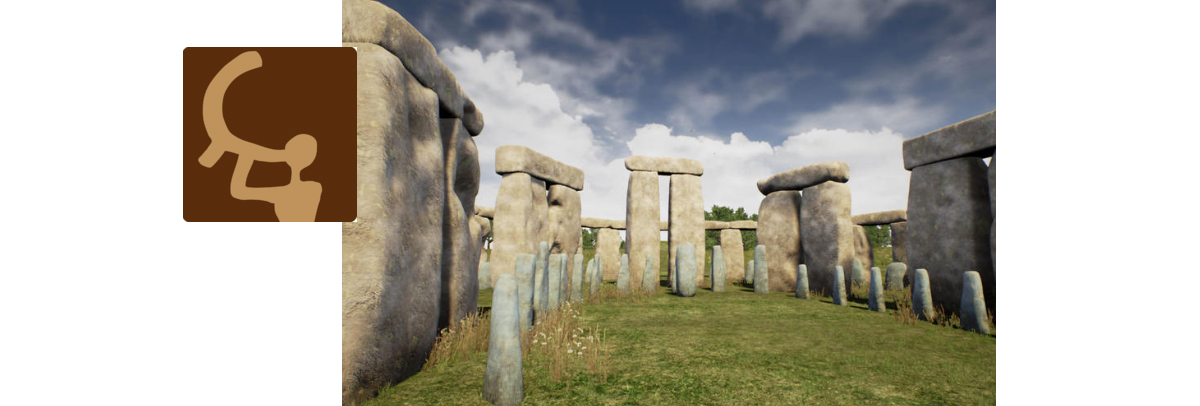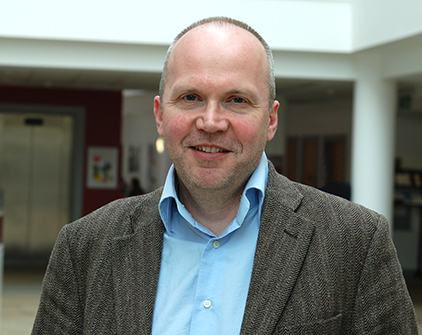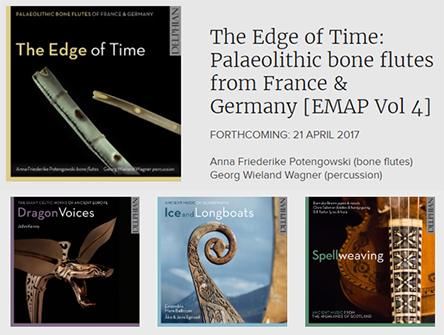New app offers ancient sights and sounds of sites like Stonehenge

Wed, 12 Apr 2017 10:22:00 BST
Unlike other computer game-like walkarounds, the Huddersfield app enables the user to hear what an ancient site used to sound like by integrating acoustic modelling
 A NEWLY-launched app from a researcher and a team of technicians at the University of Huddersfield, will turn smartphones, tablets and computers into time travel devices, enabling users to see and to hear ancient and mysterious sites such as Stonehenge as they were in the distant past, before they fell into ruin.
A NEWLY-launched app from a researcher and a team of technicians at the University of Huddersfield, will turn smartphones, tablets and computers into time travel devices, enabling users to see and to hear ancient and mysterious sites such as Stonehenge as they were in the distant past, before they fell into ruin.
Named the EMAP Soundgate, it is now available as a free download for PC and Mac, with a Mac only version at Apple’s App Store.
The University’s Reader in Music, Dr Rupert Till (pictured), has a global reputation for “sound archaeology”, including investigations into the acoustics of ancient spaces, and for recreating the music and instruments of early civilisations. Now, his research into the sound properties of sites that include Stonehenge and prehistoric cave dwellings in Europe has led to a free app named the EMAP Soundgate that can be downloaded for PC, Mac, Android and iOS operating systems.
The sonic dimension of the new app is the most significant innovation, said Dr Till.
“There are a number of computer game-like walkarounds for different historic sites, but what is new with our app is the ability not only to seewhat a site like Stonehenge used to look like, but also to be able to hear what it used to sound like, by integrating acoustic modelling. Also, the use of recordings of relevant ancient musical instruments is very new.”
In addition to Stonehenge, where Dr Till has conducted extensive research on the original acoustics, the first release of the app enables users to make visual and sonic virtual tours of two other World Heritage sites – Palaeolithic Age decorated caves near Altamira in Northern Spain, and the ancient Roman theatre at Paphos in Cyprus. New sites could be added to future releases, and there are also plans to adapt it for virtual reality headsets.
Full physical access to the sites included on the first version of Dr Till’s app can be restricted. It is rare to be allowed to enter the centre of Stonehenge, for example. Therefore the app, installed on a portable device, can enrich an actual visit.
“What you see today at Stonehenge is a remnant of what used to be there, so it will be very interesting for visitors to have this app showing what it used to look like at different periods, from the beginning of its development through to its completion about 4,000 years ago,” said Dr Till.
App users will also have the choice of visualising the site at in daylight, dusk or after dark, with appropriate natural sounds.
 Ancient musical instruments will also form part of the app’s sound bank. Dr Till’s recent activities have included the production of recordings for the European Musical Archaeology Project. They have included an acclaimed disc of Viking age music and the sounds made by ancient bone flutes.
Ancient musical instruments will also form part of the app’s sound bank. Dr Till’s recent activities have included the production of recordings for the European Musical Archaeology Project. They have included an acclaimed disc of Viking age music and the sounds made by ancient bone flutes.
The app has been conceived, developed and produced in-house at the University of Huddersfield, with the expertise of its Computer Games department being crucial to the digital modelling, based on the acoustic data provided by Dr Till.
The app is the culmination of some six years’ research by Dr Till, who has been in receipt of major funding from EU sources and from the UK’s Arts & Humanities and Engineering & Physical Science research councils.
Download the free EMAP Soundgate app at:
- PC & Mac: http://eprints.hud.ac.uk/31721/
- Mac via App Store: https://itunes.apple.com/gb/app/emap-soundgate/id1207880655?mt=12
- More information can be found on the project website at: https://songsofthecaves.wordpress.com/multimedia/soundgate-app/
- EMAP CDs can be found at http://delphianrecords.co.uk/product-group/the-edge-of-time-palaeolithic-bone-flutes-from-france-germany-emap-vol-4/







